Questionhello,
I have a 3 months year old german shephered, and I am having some trouble with him.
he likes to jump on me and starts biting my hands or feets, i bought him some toys but he doesnt seem using them.
I am thinking to buy him a crate maybe this will help him.
i want to know when is the best time to use a leash/collar and which one do you request?
please advice me
AnswerThese are not simple questions.
Consistently is very important in correcting jumping and other problems. Quickly correcting him each and every time he jumps on somebody is very important. Something bad has to happen each time. People are successful with a number of different things. One of the most gentle is to grab his front paws and hold him up. The traditional knee to the chest or step on his paws work well too. In each case apply ''Bad dog, its name off!'' in a firm, but not loud voice. Go ahead with it even if he is too quick to add a physical correction.
If your dog is at least 4 - 5 months old, start with a good 6' leather
leash and a sturdy slip collar, the metal chain ones with the rings on each
end. You want the shortest one that will go on and off easily. If you walk
with the dog on the left, pull the chain through one loop forming a "P".
Facing it, slip it over its head. The free end should come over the neck to the leash, and the other end should drop slack when there is no pull on the leash. Before 4 months use a conventional flat collar to protect the tender young neck.
Easier dogs will give up their pulling with a few good snaps of the leash
combined with a stern "Bad dog!". You can work up to forceful corrections
with the leash doubled up in both hands and your whole body behind it. But
you don't want to use any more force than you need. One gentle technique I
like is to just stop when he pulls. He wants to go. If you move forward when
the leash is slack, and stop when he pulls, he should quickly figure out the
only way to get to go, is not to pull. This is about teaching him not to
pull, not getting somewhere. The man that taught it to me said "If in a half
hour you haven't made it out to the front walk, fine, you have taught him a
lesson.
Still, you may want to switch to a head collar. The leading brands are Promise, Haltie, and Gentle Leader. They have a strap going around the dogs nose looking something like a muzzle. They work by pulling the dogs head around. No other way gives you such great control with so little force. The prong collar is now a
dangerous relic of value only for its macho looks. Do not consider using one
without hands on instruction from somebody with plenty of experience with them.
All but the most recalcitrant young puppies can be controlled before they are 4 months old with the flat collar and patience. If you must have something more with a younger puppy, use a fabric restricted slip collar. These are sort of a cross between the conventional flat collar and the slip collar. Some of them are adjustable, Good for a growing puppy. They have a fabric loop at one end with a metal ring holding the other end in the loop, allowing it to slid back a forth. find one, or adjust one to where it will go on over the puppies head, but will not tighten up past a snug fit around the neck. Put it on the same way as the metal slip collar. The service dog school my Pepper belongs to uses them on all their dogs, puppies and working dogs, except where they must use a head collar.
Young Labs, which I know best, and other puppies tend to very bad about
biting. You see a litter of them, and all the ones that are awake are biting
another one or themselves. I am not even sure they realize that when they are
alone, if they quit biting, they would quit being bitten. At 3 to 4 months
they are getting their adult teeth, and it seems they spend every waking
moment biting or chewing. One thing you can do at that stage is to knot and wet a piece of cloth. Then freeze it. The cooling will soothe the gums. Only let the puppy have it when you are there to watch it. I maintain a Lab's favorite chew toy is another
Lab. Otherwise they settle for any person they can. They keep hoping to find
one that won't yelp and jerk their hand away, or growl "Bad dog." and clamp
their mouth shut. Then offer a chew toy. They keep trying despite hundreds
of corrections. Another good technique is to quit playing and go away. Be
sure to praise them when they are playing nice and not biting.
You just have to keep on correcting them, hundreds of times, not dozens.
Provide sturdy, safe toys such as Kongs and Nylabones. Avoid things they can
chew pieces off and choke on them. Keep them away from electrical cords.
Crates are essential for most young Labs and other dogs.
The pet stores are full of toys that many dogs will quickly chew up into
pieces they could choke on or cause intestinal blockages. If you are not
there to watch, stick to sturdy stuff such as Nylabones and Kongs. Keep a
close eye on chew toys and quickly discard anything that is coming apart in
pieces. Rawhide is especially bad because it swells after being swallowed.
These problems are the worst with, but not limited to, large, aggressive
chewers such as Labs.
I am moving to more positive methods along with most other dog trainers. Something bad still has to happen to correct some behaviors. Stepping back and turning around is good fro jumping. Yelling ''Ouch!'' and walking away is good for biting. Pulling the dog backwards if good for ones that pull on leash.

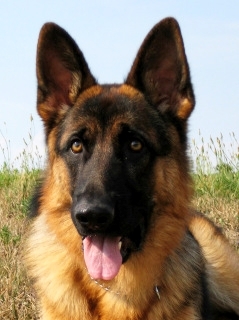 2yo German Shepherd Male
Question
My Boy...
Hi there....I have a 2 year old, pur
2yo German Shepherd Male
Question
My Boy...
Hi there....I have a 2 year old, pur
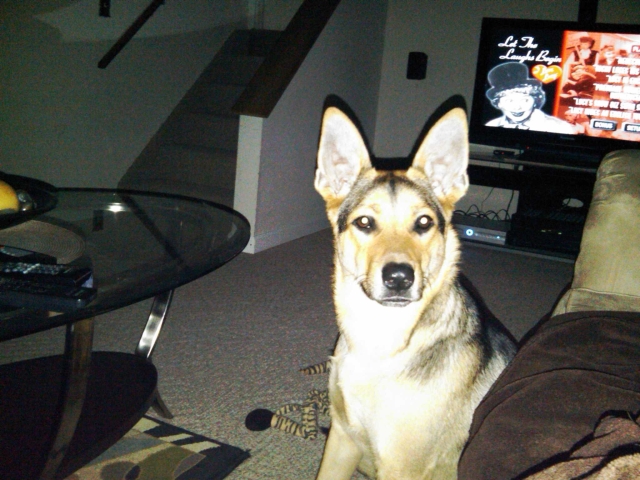 My German Shepherd Acts Scared
Question
Mannie
I have a male 1/2 German Shepherd 1/2 H
My German Shepherd Acts Scared
Question
Mannie
I have a male 1/2 German Shepherd 1/2 H
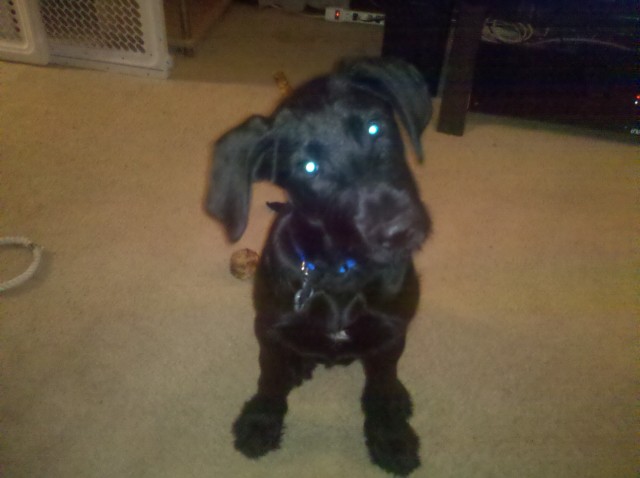 purebreed german shepherd?
Question
king
I purchased a dog 2months ago and he weig
purebreed german shepherd?
Question
king
I purchased a dog 2months ago and he weig
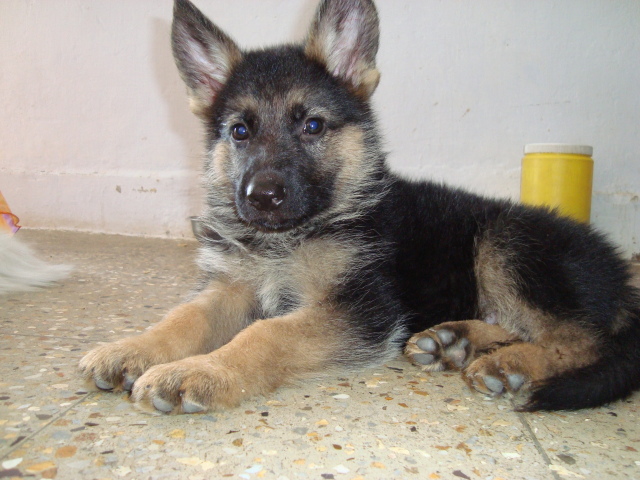 puppy weight
Question
Rocky
I recently purchase 2 mnths old GS puppy
puppy weight
Question
Rocky
I recently purchase 2 mnths old GS puppy
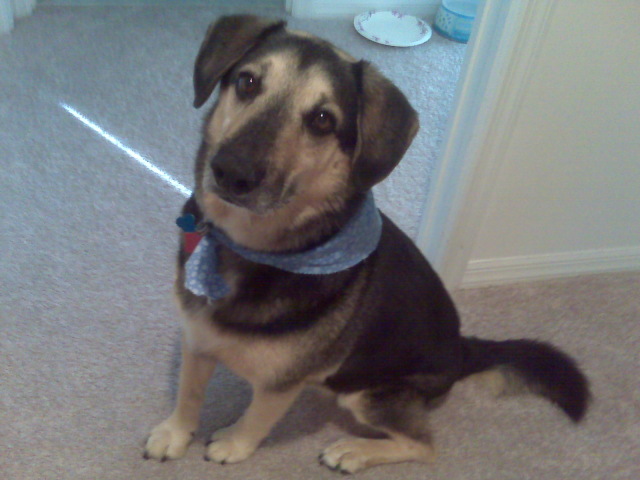 German Shepherd Mix Food
Question
Harley
Hello,
I have a 6 1/2 year old German S
German Shepherd Mix Food
Question
Harley
Hello,
I have a 6 1/2 year old German S